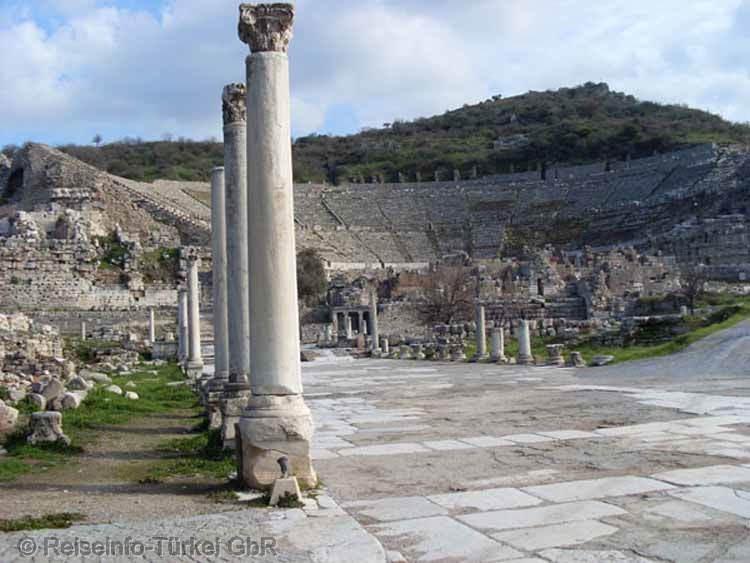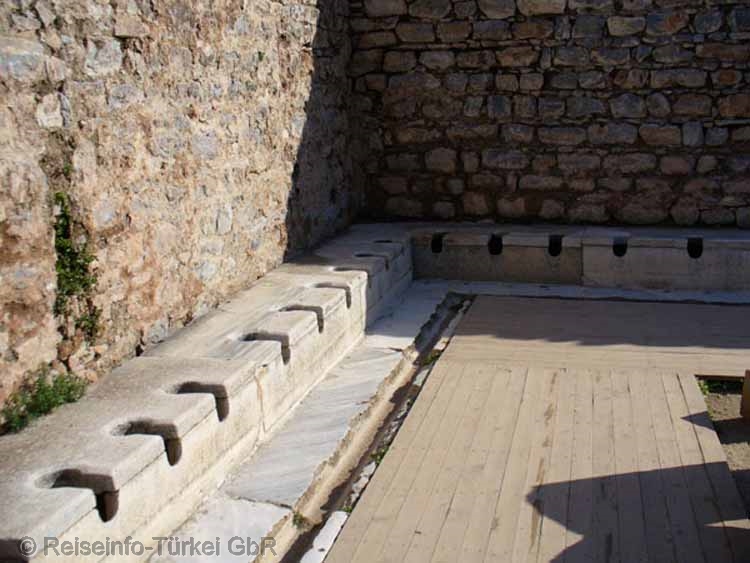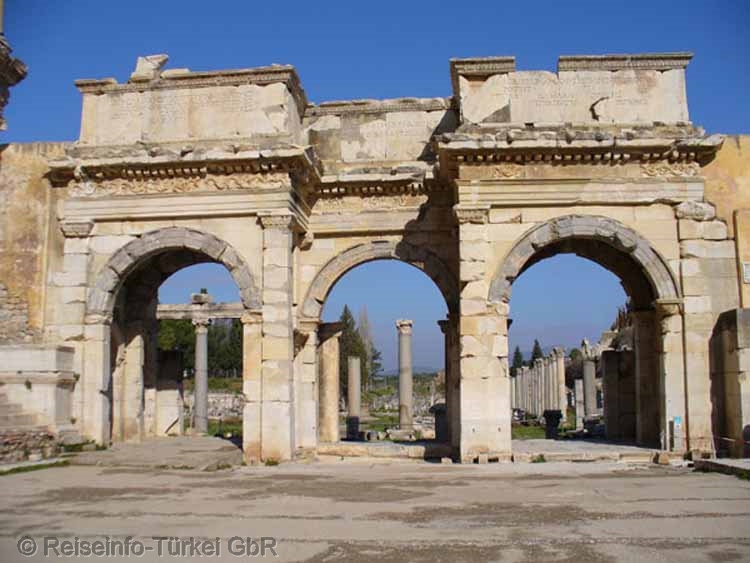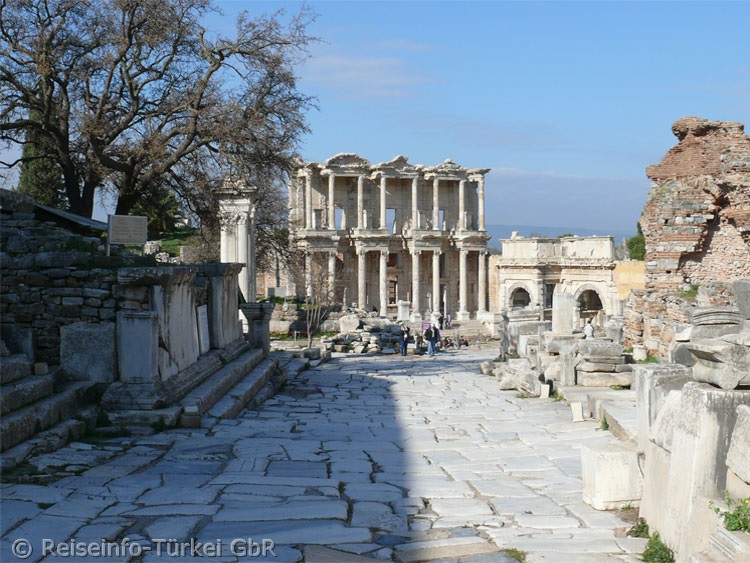|
Interesting places in Turkey |
|||
| One of the largest cities of the Roman Empire |
|
||
| Ephesus | |||
| Antique metropolis | |||
|
|
|||
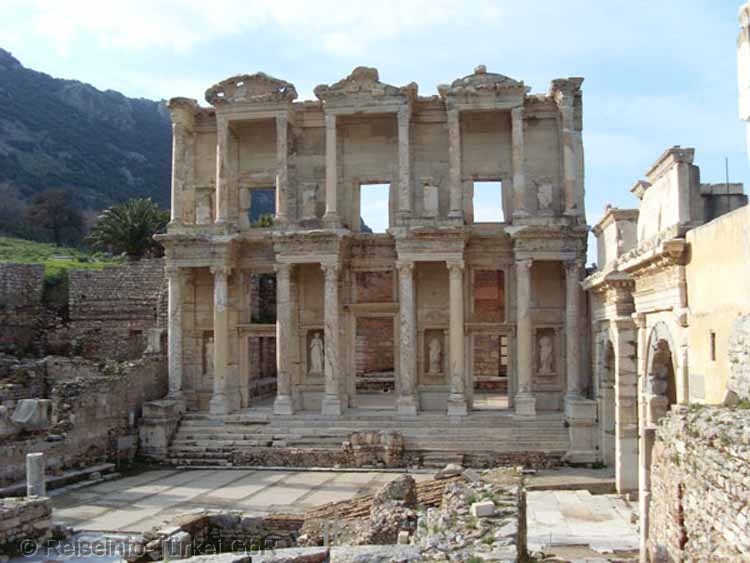 |
|
||
| The Library of Celsus | |||
|
|
|||
|
What do you show of Ephesus? One could fill 20 pages (and more), one would still not do justice to the place. You have to see for yourself. Here is just a small selection.
The Celsus Library is one of the most famous ancient monuments in Turkey. |
|||
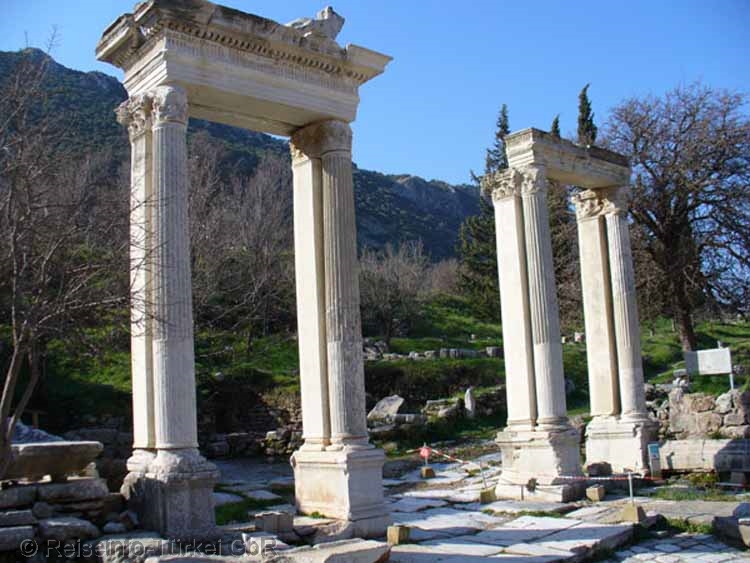 |
|||
| The Hadrian Gate next to the Celsus Library | |||
|
Ephesus was one of the most important and largest cities of the Roman Empire. Numerous public buildings were financed by both the city and rich citizens. Temples for the emperors Vespasian and Hadrian were built within the framework of the Emperor's cult. Ephesus was the seat of the governor of the province of Asia. |
|||
|
|
|||
| The great theatre of Ephesus | |||
|
|
|||
|
The (Greek) theatre of Ephesos is one of the largest theatre buildings of antiquity. In its last phase of expansion, it was able to accommodate a good 25,000 spectators. The marble panelling of the cavea, the auditorium, was lost over the centuries. |
|||
|
|
|||
| The public latrine | |||
|
|
|||
|
Here they sat, discussed and made deals. The construction of latrines was mostly privately financed, because the Romans only invested money in hygiene if there was a measurable benefit. |
|||
|
|
|||
| The trade agora, looking towards Mazeus Mithridates Gate and Celsus Library | |||
|
|
|||
|
The trade agora was the most important commercial centre of a city. The function and form of the Agora are partly identical to those of a Roman forum. |
|||
|
|
|||
| The Mazeus Mithridates Gate, named after its builders | |||
|
|
|||
|
The gate with three passages on the right side of the Celsus Library was built in 40 AD by the slaves Mazeus and Mythridates for Emperor Augustus, who gave them freedom. |
|||
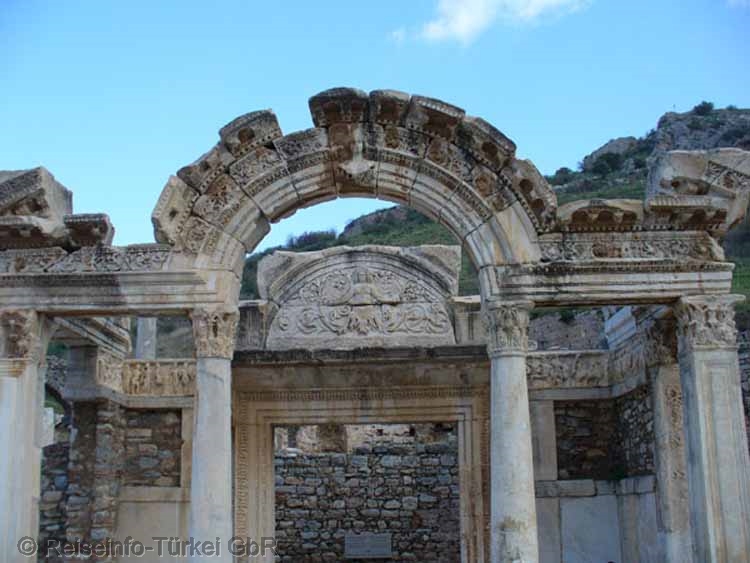 |
|||
|
The Front of the Hadrian Temple |
|||
|
Like Trajan and Domitian later on, Hadrian's temple was built in honour of Ephesus. |
|||
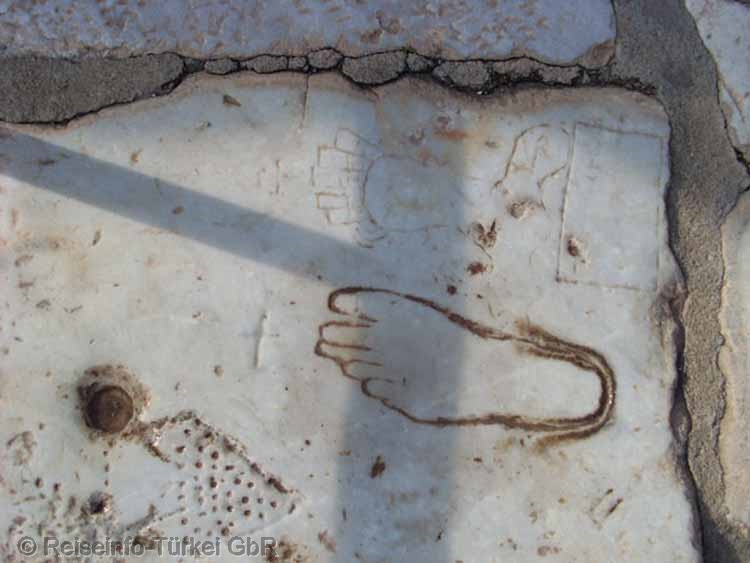 |
|||
|
Ancient advertising on the Marble Road between the theatre and Celsu library (reference to the whorehouse) |
|||
|
The way the Romans dealt with prostitution was different from ours. As usual at all times, prostitutes in Roman antiquity also had to draw attention to themselves in order to attract customers. |
|||
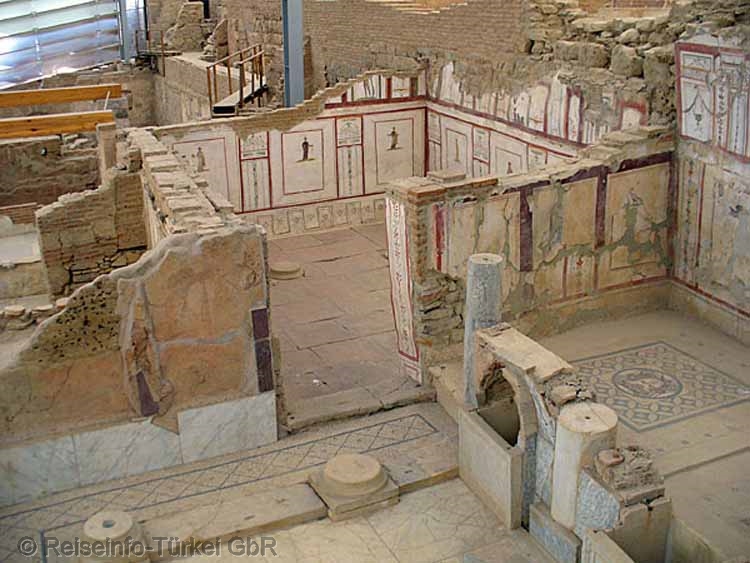 |
|||
|
In the covered "terrace house 2". The state of preservation is for the most part excellent |
|||
|
|
|||
|
The so-called Terrace houses are two complexes of ancient private houses in Ephesos.
Both complexes are located on the southern slope of Bülbüldağ, the larger of the two city mountains of Ephesos. The better preserved "Terrace
house 2" occupies an area of about 4000 m² and borders on the so-called Kuretenstraße in the north. |
|||
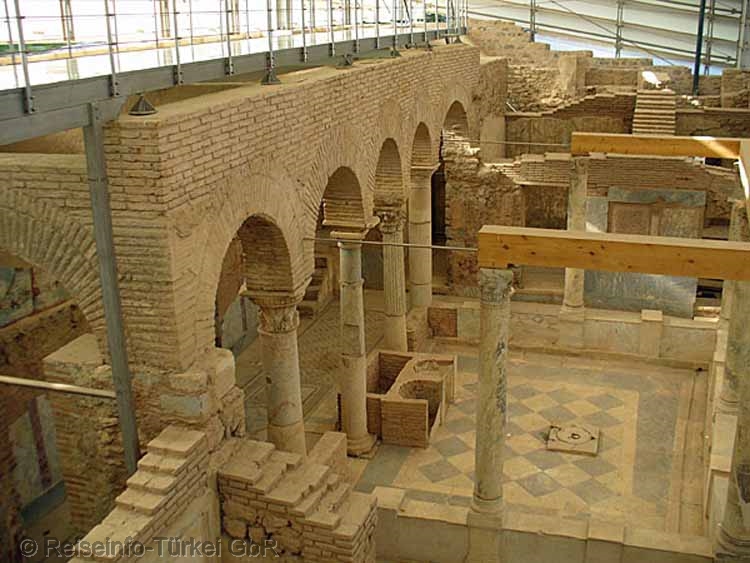 |
|||
|
View from above into the peristyle courtyard of apartment 2 |
|||
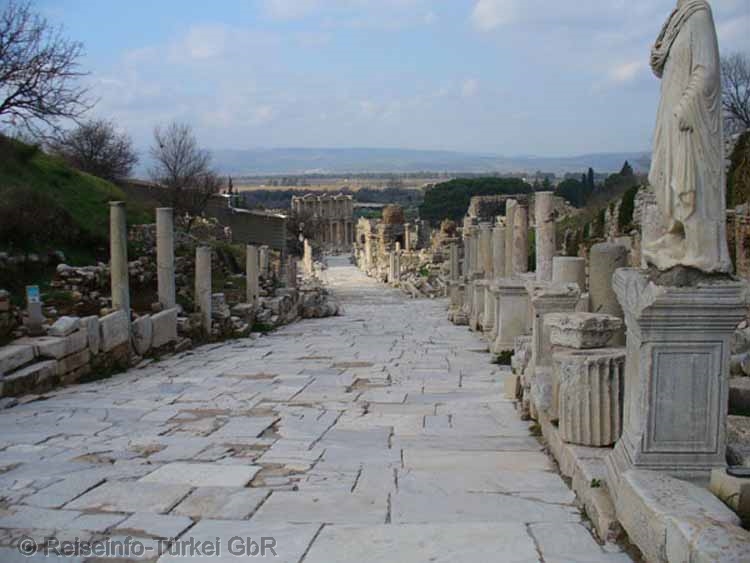 |
|||
|
The Kureten street, main street in Ephesos |
|||
|
|
|||
|
After Gaius Julius Caesar effectively gave all power over Egypt to his beloved Cleopatra, he at the same time had her younger sister Arsinoë expelled and had her perform in Rome during his great triumphal procession in July 46 BC. Arsinoë aroused the regret of the watching Romans and was subsequently allowed to go into exile in the temple of Artemis in Ephesus. |
|||
|
|
|||
| To the left of the tree stood the octagonal tomb of Arsinoë on a square pedestal | |||
| |
|||
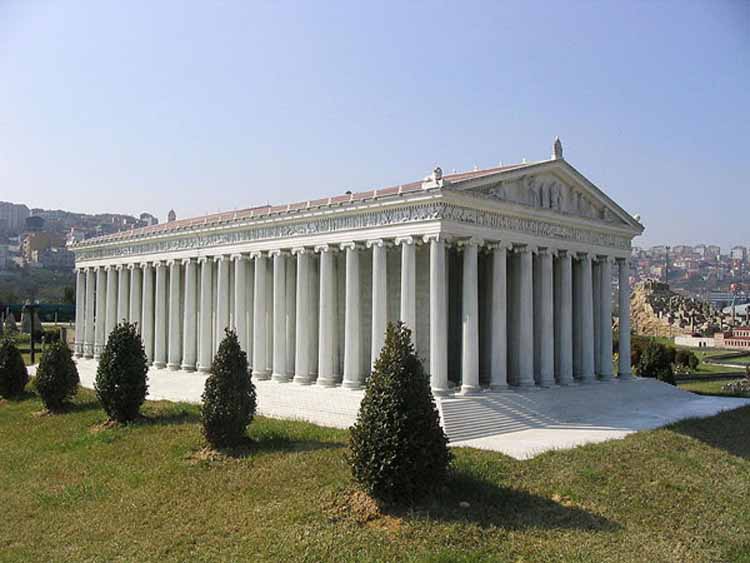 |
|||
| Temple Reconstruction of Artemision copyright by Magnus Manske | |||
|
The temple of Artemis in Ephesos or briefly the Artemision of Ephesos was dedicated to the Olympic deity Artemis in its special form as Artemis Ephesia. It is said to have been founded by the Amazon Queen Otrere and was one of the "Seven Wonders of the World" of antiquity. The Temple of Artemis brought the city of Ephesus considerable wealth through foundations and countless pilgrims. The temple fell victim to an arson by Herostratos on July 21, 356 B.C. He committed the act out of craving for recognition - his plan to become famous and thus immortal through the burning of the wonder of the world was successful.
|
|||
